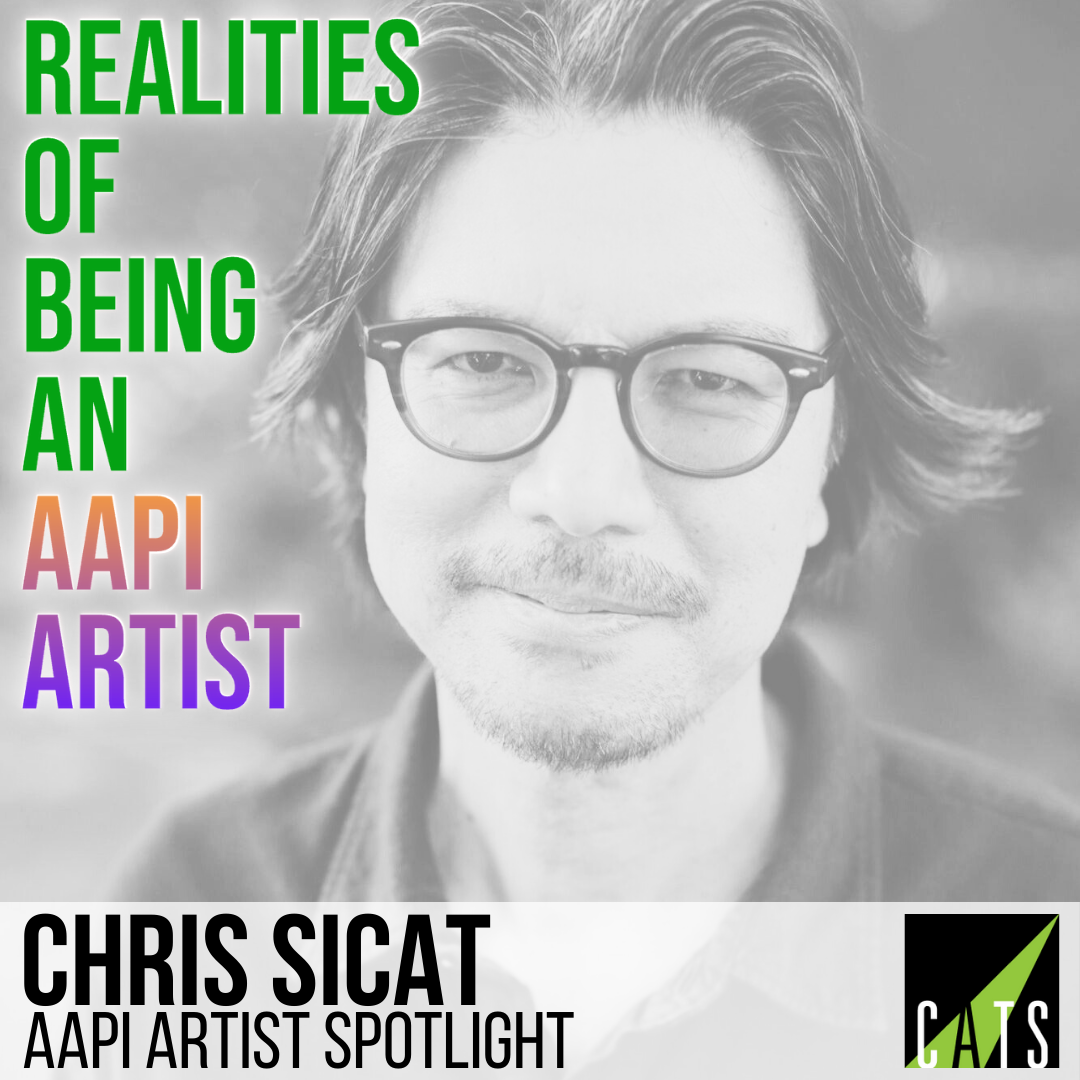REALITIES OF BEING AN AAPI ARTIST
Realities of Being an AAPI Artist Series
Artist Focus:
Chris Sicat
Artist, Educator and Director
@christophersicat - IG
YouTube
CATS: How did you realize you wanted to become an artist?
Chris Sicat: From an early age, I've always been drawing. My earliest memory is drawing a house in the sand after a thunderstorm when I was about four years old. This act of creating and observing my surroundings was my first conscious experience of being an artist.
CATS: What inspired you to pursue art?
Chris Sicat: My inspiration came from my early experiences of observing the world around me. The vivid memory of drawing my parents and our house in the sand was a significant moment that ignited my passion for visual storytelling.
CATS: What challenges did you face on your journey as an artist?
Chris Sicat: One of the biggest challenges was unlearning preconceived notions of what art is supposed to be. I had to challenge myself constantly to go beyond traditional definitions and find my unique voice. Collaboration and support from family and friends were crucial in overcoming these challenges.
CATS: How important is formal education in developing artistic skills?
Chris Sicat: Formal education provides the technical foundation and discipline necessary for artistic growth. It also offers networking opportunities and exposure to different perspectives. However, it's actually important to pursue personal exploration and self-education.
CATS: What are some misconceptions about being an artist?
Chris Sicat: A common misconception is that artists work in isolation. In reality, art is highly collaborative, involving interaction with other artists, communities, and supporters. Another misconception is that artists always create for commercial purposes, while many create for personal expression and storytelling.
CATS: How do you balance artistic expression with commercial viability?
Chris Sicat: Balancing artistic expression with commercial viability involves diversifying one's portfolio and engaging in multiple roles. For instance, apart from being a visual artist, I also teach, work in a museum, and occasionally do theater. This holistic approach helps sustain an art career.
CATS: What advice would you give to aspiring artists?
Chris Sicat: Spend time on technical exercises and practice diligently. Focus on creating without immediate concern for the outcome. Engage in academics if possible, as it provides structure and commitment. Alternatively, pursue your own path and create your own school of thought.
CATS: How can parents support their aspiring artist children?
Chris Sicat: Encourage a holistic view of their child's interests. Support them in exploring various art forms and provide opportunities for them to develop their skills. Recognize their dedication and passion, and help them find a balance between creative pursuits and practical considerations.
CATS: What is your perspective on being an Asian American artist?
Chris Sicat: Being an Asian American artist involves navigating and challenging traditional perspectives in the art world. It's about finding and expressing one's unique voice while acknowledging and overcoming cultural and societal barriers.
CATS: What sacrifices have you made for your art career?
Chris Sicat: Sacrifices often come in the form of setbacks and failures. However, these experiences are integral to growth and learning. The journey involves continuous self-discovery and unlearning of old beliefs to embrace new perspectives.
CATS: What role did your parents play in your artistic journey?
Chris Sicat: My parents were very supportive of my artistic pursuits. They recognized my dedication and passion for art from an early age and encouraged me to follow my path, even if it meant deviating from conventional careers.

